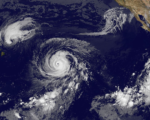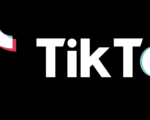The soothing aroma of lemongrass, ginger, tamarind, and camphor fills the air as a hot herbal compress is applied to the body—an age-old therapy that has been cherished for centuries in Thailand and Southeast Asia. This traditional treatment, which involves steaming a mix of herbs wrapped in cotton cloth and applying it to the skin, is widely used for relieving muscle aches, joint pain, and inflammation.
Though herbal compresses have long been a staple of wellness practices, their precise health benefits remain unclear. A 2015 review suggested that many of the advantages of this therapy may be attributed to heat, which helps improve blood circulation and alleviate pain, rather than the herbs themselves.
The use of herbal remedies is a massive global industry, but cultural differences and limited regulation have made it difficult to standardize or scientifically validate these practices. The World Health Organization (WHO) reported in 2018 that many countries still lack national policies or regulations on traditional medicines, making research and effective oversight challenging.
To bridge this gap, Thailand’s Thammasat University, through its Center of Excellence in Applied Thai Traditional Medicine Research (CEATMR), is working to scientifically explore and standardize the properties of herbs used in Thai herbal compresses. According to Arunporn Itharat, director of CEATMR, while herbal medicine is widely used in Thailand, especially in rural areas, much of the traditional knowledge remains unverified by scientific research.
One major challenge in herbal medicine, as Itharat explains, is the variability in the properties of herbs, which can change depending on factors like the herb’s variety or where it’s grown. Moreover, the misidentification of herbs is another pressing issue. In 2020, Itharat’s research published in Science & Technology Asia identified specific components in herbs that contribute to the anti-inflammatory effects of herbal compresses, a crucial step in validating the efficacy of these treatments.
In their efforts to make the remedies more accessible and effective, CEATMR researchers have also explored how traditional harvesting methods impact the quality of extracts. For instance, when harvesting zingiber montanum (commonly known as plai ginger), elders recommend collecting the roots during the winter when active compounds are more concentrated—a piece of knowledge yet to be scientifically tested.
In addition to validating traditional practices, the center is developing modern applications of herbal remedies, such as emulsion-gels and creams that incorporate herbal extracts. Itharat is also investigating innovative delivery methods like cooling hydrogel patches and electric herbal compresses. The latter, a collaboration with Thailand’s National Science and Technology Development Agency, allows for extended, controlled application of herbal extracts using a battery-powered compress. This approach offers a more precise and consistent dosage than traditional methods.
Thailand has also committed to furthering traditional medicine research and education. In 2021, Thammasat University launched Thailand’s first Master of Thai Traditional Medicine Clinic Program, combining both traditional and modern medical practices. The global interest in such therapies is growing, with countries like China and India leading research into traditional medicine systems. For example, databases for Traditional Chinese Medicine (TCM) have been developed to catalog herbs and their uses, helping to standardize and study herbal knowledge.
Despite progress, there is still much to be done. The WHO estimates that more than 50,000 plant species are used globally for medicinal purposes, but the lack of standardized plant names and limited cross-border collaboration remains a significant obstacle. Itharat hopes that by validating traditional knowledge, such therapies can be integrated into modern medicine as complementary treatments that may help patients recover more quickly and naturally.
“The connection between nature and human health is undeniable,” says Itharat. “Our challenge is to preserve this traditional knowledge for future generations while making it accessible to a global audience.”


















